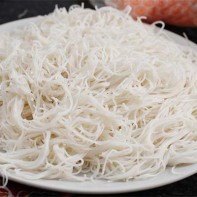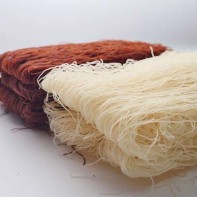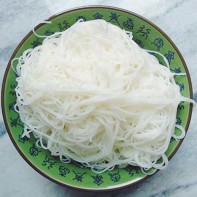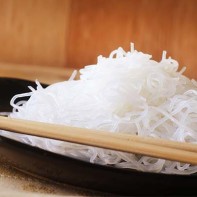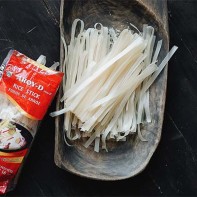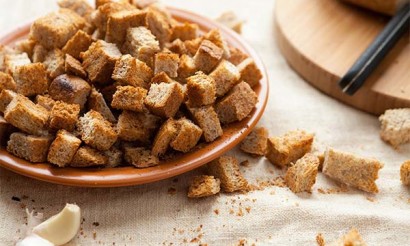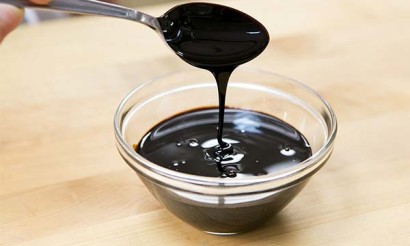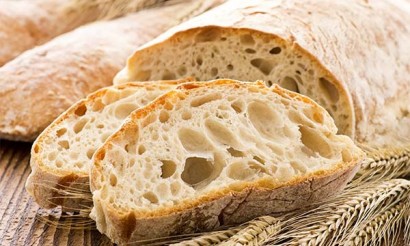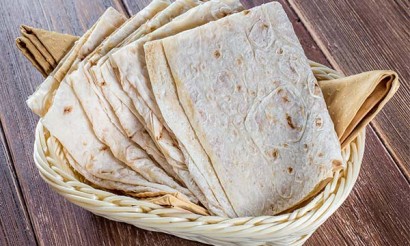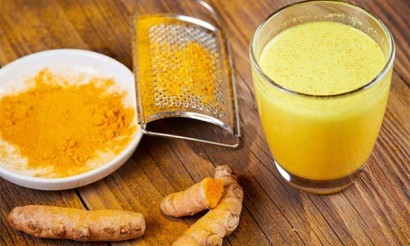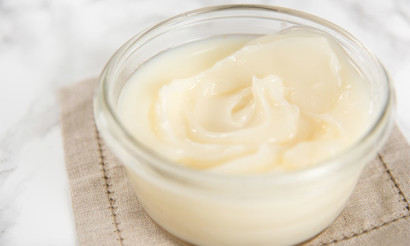Rice noodles: useful properties and contraindications.
In recent years, adherents of healthy eating are in great demand for a new, quite exotic product - rice noodles. It differs from pasta products by the total absence of gluten in its composition, for which it is widespread among fans of healthy eating. It is worth saying that in Asian countries, this product is the basis of the diet and is used to prepare soups, main courses and salads.
- What are rice noodles
- How rice noodles are made
- Rice noodles and funchosa - the same thing?
- Composition and calories
- What are the benefits of rice noodles
- General benefits
- For Men
- For Women
- For Pregnancy
- For breastfeeding
- For children
- Can I Eat Rice Noodles for Weight Loss?
- Rice Noodles in Medicine
- Diabetes Mellitus
- For pancreatitis
- For gastritis
- For gout
- Harms and Contraindications
- How to choose and store
- How to cook rice noodles: Recipes
- As a side dish
- With Vegetables
- With Seafood
- With Mushrooms
- Korean
- What rice noodles are eaten with
- Rice Noodles Facts
What are rice noodles
That is the name of a type of pasta, which is an elongated, long strips. It is the national product of Chinese, Japanese, Thai cuisine. It is unique in that it perfectly harmonizes with any other food - chicken, meat, vegetables, seafood, mushrooms, which allows you to create real masterpieces of world cooking.
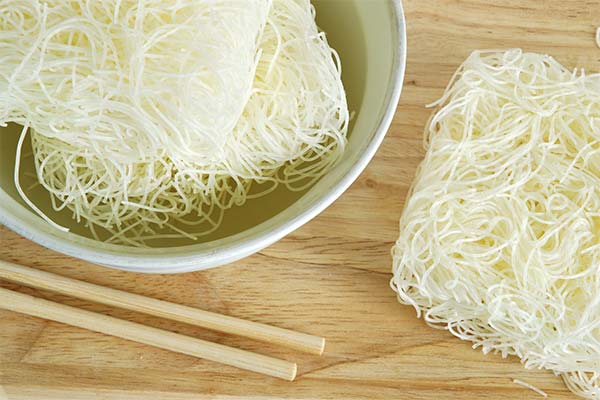
The length of the products is from 20 to 50 cm. And the width - from 2 mm to 2 cm. Their color varies from snow-white to whitish-gray, dense texture, which becomes elastic after cooking. Surprisingly, when noodles are eaten there is almost no rice aftertaste. Instead, they have a bean or nutty flavor.
How they are made
Rice flour and water are used to make noodles. They are made with ground extra virgin or first class rice flour, which is then milled using special equipment. Noodles can be produced in one of the following ways:
- Fast - steamed flour with gelled starch is mixed with boiling water and extruded in hot, then quickly blanched and dried.
- Moistened rice flour is kneaded with water, gelatinized, mixed with pumpkin powder, then the dough is extruded, cut, blanched and dried.
- The rice soaked in water is milled into a liquid dough, which is spread in layers, dried, cut into noodles and packaged.
The production of rice noodles is quite labor-intensive, requiring large financial investments. This is due to the cost of the final product, which is several times more expensive than pasta made from ordinary flour.
Rice noodles and funchosa - the same thing?
Many people think that rice noodles and funchose are the same thing. However, such a statement is fundamentally wrong. The first product is prepared precisely from rice grits. The second inherently is not a product, but a dish made from noodles. But starchy pasta is used for this. They are poured with boiling water, infused for a while and supplemented with other foodstuffs - cucumbers, spices, garlic, carrots.
It is at the discretion of the cook - he chooses his own set of components for the funchosa. It can also be mushrooms, meat, poultry, etc. To make starchy noodles use the starch of mung beans, which are native to India. Rice is not used to prepare this product. How rice noodles are made has been described above. There are absolutely no legumes and no other ingredients at all, except rice, water, and in some cases, pumpkin powder. The difference between rice noodles and funchosas is obvious.
When cooked, starchy noodles become almost completely transparent. But, you can't keep it in boiling water for a long time, much less boil it. The starch will swell, and the thin strips will turn into a mushy mixture. When heat-treated, rice paste turns white and becomes particularly dense and hard. Noodles made from legume starch are much thinner than vermicelli made from rice.
It is worth mentioning that Asian countries use yams, chickpeas and mung beans to make funcho noodles. This is a gluten-free food that is good for the body. But to supply other countries for the production of funchoza use starch and even soy protein, which significantly reduces the value and usefulness of the product.
Composition and calories
The energy value of rice noodles is 350-370 kcal.
The composition is high in:
- proteins (3.50 g per 100 g of the product);
- carbohydrates (82 g);
- Some fats (0.55 g.).
There are also dietary fiber (1.7 g.), as well as vitamins, macro-and micronutrients. B vitamins are thiamine, riboflavin, folate, pantothenic acid, pyridoxine and vitamin PP. Of the macronutrients, most are calcium, potassium, sodium and phosphorus. Magnesium is also present. Micronutrients are iron, manganese, copper, selenium and zinc.
Rice noodles contain essential, substitutable, saturated, polyunsaturated, monounsaturated fatty amino acids and acids. The most valuable of them are Omega 3, 6, 9, glutamic and linoleic acids.
Rice noodles provide fast satiety and a long feeling of fullness.
What are the benefits of rice noodles?
Rice noodles are not known to have any specific health-promoting or therapeutic properties. However, thanks to their balanced diet, the Japanese and Chinese rarely fall ill compared to other nations, and they live much longer. Consistent consumption of rice noodles is also of great importance here.

The benefits of rice noodles are:
- Normalization of the nervous system.
- Prevention of edema formation.
- Stabilization of metabolic processes in the body.
- Prevention of thrombosis caused by the development of plaques due to high cholesterol.
- Improve the condition of hair, nails, and skin.
All of the listed beneficial properties of the product are due to its composition. But for the greatest benefit to the body, it is necessary to eat it regularly. Asian pasta has complex carbohydrates, which allows a person to be satiated quickly and not to feel hungry for a long time. At the same time, the need for sugars and fats, after carbohydrate and easily digestible food, is significantly reduced.
Overall Benefits
There are no restrictions for the consumption of rice noodles. It can be given to infants as a complementary food. It can be eaten by the elderly and even people who have problems with the digestive system. Also give the product and patients after a serious illness, as long as they are at the recovery stage.
Rice noodles are easily digestible, they do not form stagnant phenomena in the human body. One of its main values is its antioxidant effect, which reduces the risk of malignant tumors in the bladder and intestines. Consumption of rice noodles provides an opportunity to quickly replenish energy reserves, replenish vitamin and mineral deficiencies in the body, increase vitality and normalize health. The complex of nutrients contained in the product is necessary for the normal activity and performance of people.
It is worth saying that rice noodles can be consumed by people who have an individual intolerance to gluten. In this regard, they can not eat conventional pasta made of wheat or other types of flour. Rice noodles can completely replace flour pasta, which will not adversely affect the work of the body. Due to the fact that the amount of sodium is small, there is no swelling after noodles consumption. This is important for hypertensive people and pregnant women.
People prone to allergic reactions can also eat rice noodles. It does not contain gluten, which provokes allergies. That is why the usual pasta products made from flour, which have this component in its composition, in some cases are prohibited. This does not apply to the product of rice.
For men
Rice vermicelli is able to charge vitality, give strength, enhance brain function. That's why it is irreplaceable for the stronger sex who are engaged in both physical and mental work. Such food gives a feeling of fullness for a long time, which is very important for busy men who during the working day do not have time to eat frequently and adequately. The high energy value of the product is also important for working men, so it is recommended to eat rice noodles to them quite often.
For women
Regular consumption of rice noodles will make your nails and hair strong and your skin smooth and healthy. This is due to the large amount of thiamine, riboflavin, vitamin E. The skin after a healthy meal of rice becomes young, fine wrinkles are smoothed, it takes elasticity and is infused with moisture. No peeling or irritation!
Pregnancy
Thanks to its unique composition, rice pasta is not able to cause stagnation in the body and provoke edema. Therefore, pregnant women just need to include it in their diet. It has no cholesterol and gluten, which is also important for the food consumed by a woman in the pregnancy. Plus, vitamins and minerals, which are a lot in rice noodles, strengthen the nails and hair. They are the first to "suffer" during pregnancy, becoming brittle and fragile. There is a lot of calcium in the pasta, which is one of the main components that women need during the process of carrying the baby.
Iron is another important element for pregnant women. Very often at this time in a woman's body there is a deficit of iron, which leads to anemia. It is treated with medications, with the obligatory inclusion in the diet of foods rich in this component. Rice noodles are among these.
Breastfeeding
The absence of gluten and gluten in the composition of rice noodles makes it hypoallergenic. Therefore, when breastfeeding the risk of allergic reactions in the baby because of the product is completely excluded. Nourishing, moderately caloric noodles are an indispensable source of complex carbohydrates, micro- and macronutrients, which the little man and his mother need. Breastfeeding women should definitely include the product in their diet, using it to replenish the valuable substances transmitted to the baby with breast milk.
But when eating Asian pasta, there is no need to enrich it with hot spices, peppers, soy sauce, vinegar and radish. A dish with baked or boiled vegetables, lean meat or poultry, will be just right for the mother when breastfeeding.
For kids
Easily digestible rice noodles are an excellent food for children and the elderly. It contains absolutely no fiber, so it is impossible to "earn" indigestion, constipation or bloating from eating it. For children it is a delicious, hearty dinner, supplemented with vegetables, dietary meat or seafood, which will bring maximum benefit to the immature body. The feeling of hunger after such a meal is dulled for a long time, and this, in turn, does not allow kids to pile on the sweets. Rice pasta used as a side dish to a meat or vegetable dish is ideal for children.
Asian noodles are indispensable for schoolchildren as well. After all, its regular consumption improves brain activity. Well and beneficial effect on the whole body is an additional bonus in its favor.
Is it possible to eat rice noodles for weight loss
Adherents of a healthy diet highly respect rice noodles. But because its energy value is quite high - at least 350 kcal per 100 grams of product, it is not advisable to use this product for weight loss. It is possible, in very rare cases, to eat noodles without fatty components. For example, in combination with seafood or vegetables.
Do not forget that rice products improve metabolism. And the metabolism for weight loss is very important. Therefore, it is not reasonable to completely exclude the product from the diet. The main thing is to correctly calculate the total caloric content of food for the day, without exceeding the established limits.
Rice noodles in medicine
As a medicine, rice noodle paste is not used even in Asian countries, which traditionally consume it in large quantities. But the product is not forbidden to include in the diet of people who have kidney disease. It is also necessary for those who suffer from cardiovascular diseases. In vermicelli there is no salt at all, which makes it dietary. Since there is no fiber, people who have diseases of the gastrointestinal tract can also include Asian noodles in their diet. Even at the stage of exacerbation of ulcers, gastritis after the consumption of such food will not have problems with the stomach or intestines. Unpleasant grating, bloating are completely excluded in this case.
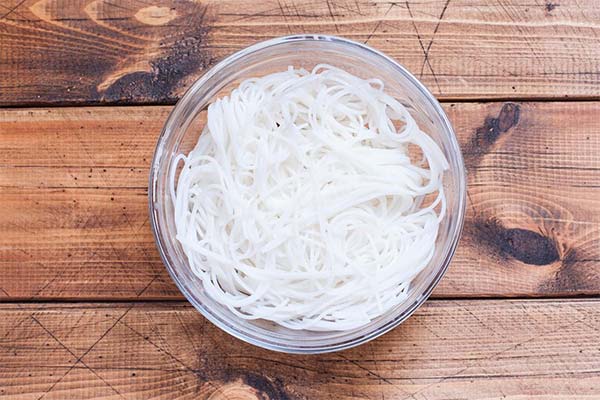
Noodles can be used as an auxiliary means to promote health, purify the body and restore it.
For diabetics
Since the glycemic index of Asian noodles is 61 units - this is considered to be an average figure, it is quite possible to eat it for diabetics in limited quantities. But it should be done carefully, not exceeding the norm portion and not often. In general, nutritionists and doctors do not recommend diabetics to eat foods rich in carbohydrates, which can increase blood sugar levels. But with type 1 diabetes it is quite possible to occasionally enjoy a hearty dinner, using pasta as a side dish to diet meats or vegetables. After that, blood sugar levels should be checked.
In order that carbohydrates do not cause irreparable damage to the body, after dinner you should take a walk in the fresh air or do simple things that require physical activity.
For pancreatitis
In the acute stage of pancreatitis, no food should be eaten. After it is stopped, the diet of people suffering from pancreatic inflammation is enriched with dietary dishes. During this period, you can eat rice noodles, but without spicy and fatty sauces, sour or salty additives. In the remission stage of pancreatitis, rice noodles are even useful because:
- Reduces the likelihood of exacerbation of the disease.
- Strengthens the regeneration of the cells of the sick organ.
- Promotes faster elimination of enzymes that are destructive to the pancreas and other digestive organs.
However, before introducing a rice product into the diet, it is worth sure to consult with your doctor.
For gastritis
With gastritis with low or high acidity, you can eat rice noodles in remission. But, as with pancreatitis, you should avoid salty, sour, spicy and fatty ingredients in the dish. Boiled noodles with butter or boiled vegetables are quite suitable for people with a sick stomach. In general, the product has a beneficial effect on the body - restores and revitalizes, which is very important for all diseases.
With gout
Rice paste does not contribute to the accumulation of excess fluid, so you can eat it with gout. On the contrary, thanks to it, the body is cleansed, which is especially important in gout. The active components contained in the Asian product are necessary for organs weakened by the disease. With gout, it is good to complement the rice side dish with fresh fruits or vegetables. Also, do not forget about the large amount of water, which should be drunk in this disease.
The damage and contraindications
There are no contraindications to the use of rice noodles. The only exception is an individual intolerance of rice. However, quite harmful to the body is a product of instant cooking. There are flavor additives, flavor enhancers and concentrates that do not bring any benefit to the body. Therefore, it is not necessary to chase the instant food, causing the body, albeit minor, but harm.
Since rice noodles have a bland taste, it is often enriched with fatty, meat sauces, flavor enhancers, all kinds of seasonings. Thus, the caloric product acquires even more energy and fat content, which, of course, is harmful to the body. It is best to dress Asian vermicelli with low-calorie additives and safe dressings.
How to choose and store
Today, it is not difficult to buy real rice noodles. In any supermarket you can find several types of Asian product. When choosing, you should pay attention to the composition - natural pasta should be made from rice flour and water. No additives, flavor enhancers are acceptable here. Then it is no longer a natural product, which no self-respecting Japanese or Chinese would eat. The length and width of the noodles depends only on the taste preferences of the buyer.
Store the product in glass or ceramic jars with a tightly closed lid. Products are very fragile and brittle, so be careful when putting in storage and taking out. The shelf life is 2 years.
How to cook rice noodles: recipes
Use the product can be used to prepare complete second courses and as part of multi-component salads. It harmonizes well with poultry, meat, fish, vegetables, mushrooms. In Japanese cuisine cucumbers, carrots, radish and seafood are added to rice noodles. To improve flavor, spices are used - garlic, ginger, paprika and red pepper, coriander, soy sauce.
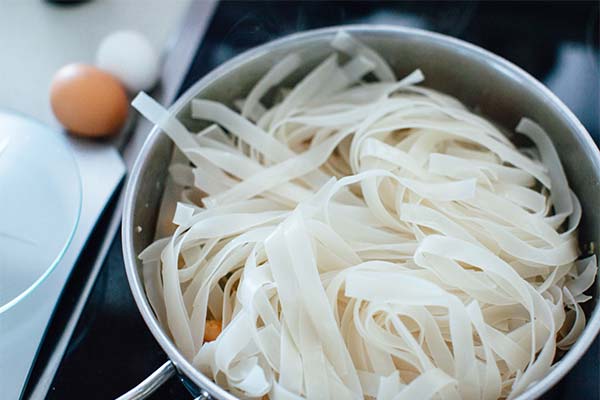
Many housewives wonder whether or not to boil rice noodles? With prolonged heat exposure, it will become shapeless and unpalatable. Therefore, it is better to steep it with boiling water. The steaming time depends on the type of product. It can be either 3 or 10 minutes. On the package, the manufacturer necessarily indicates the method of cooking, so it is better to use it.
After steaming, the pasta is rinsed with cold, preferably running, water. For soups with rice noodles, which are cooked mainly in Asian countries, use washed in cold water products. They are added to the ready soups and broths at the very end of cooking or before serving. If pasta is left in the soup, even for a short time, it will turn into mush.
On the side
As a side dish to meat or fish dishes perfectly suits vermicelli rice. Soak it in boiling water for a few minutes, rinse, salt and season with butter. You can add a little crushed garlic, herbs - dried or fresh. In principle, the dish for dietary meals is ready.
If you want to make a culinary masterpiece with other products in a pan, the noodles are soaked in hot, but not boiling water, until the condition is al dente. It is salted and added to the other prepared ingredients in a common pot or pan. Leave under a lid for a few minutes until the pasta has absorbed the juice and flavor of the other foods.
With Vegetables
Quite a dietary dinner can be made of rice noodles with vegetables. For this take sweet peppers, carrots, zucchini, onions and garlic. Slice them in thin julienne strips and fry in vegetable oil. Prepared pasta is added to vegetables, add soy sauce and stew for another 5 minutes. If you want you can vary the vegetable set with hot chili peppers, green beans, eggplant and tomatoes. A perfect vegetarian dish is ready!
With Seafood
A healthy dish enriched with seafood, great for a light dinner that does not require much time to prepare.
Ingredients:
- Rice pasta, which must be boiled beforehand;
- seafood;
- 1 small carrot;
- a medium sized onion;
- 2 garlic cloves;
- lemon juice;
- A little vegetable oil;
- soy sauce;
- paprika.
Lemon juice squeezed from half a fruit is mixed with soy sauce, paprika and crushed garlic. Seafood is cleaned, washed, and poured into the prepared spicy marinade. Shrimp can be used instead of the prepared seafood mix. Grate carrots and onions on a Korean grater and fry in oil. Add pickled seafood and cook on medium heat for 10 minutes more. Put there rice noodles, stir thoroughly and leave under the lid for 2-3 minutes.
With mushrooms
The mushroom rice noodle dish will also appeal to vegetarians and people who prefer a healthy, light meal. Despite the lack of meat and seafood, it is high in protein. To prepare it, you'll need:
- Onions, red onions;
- Fresh mushrooms, cut into slices;
- carrots;
- chicken egg;
- hot chili pepper;
- crushed garlic clove;
- fresh or dried herbs.
The dressing is made with soy sauce, a small amount of hot liquid chili sauce and half a spoonful of brown sugar. All the ingredients for the dressing are mixed together. Pour vegetable oil in a frying pan, put the onion and garlic, add the mushrooms, grated carrots. Roast vegetables with mushrooms move to one side of the pan and add an egg, previously beaten, stirring it. The steamed noodles are placed in a pan, stirred and fried for 3-5 minutes. Add the dressing, turn off the fire, season with herbs and leave under the lid for 1-2 minutes. Serve the dish at once!
Korean-style
Spicy, spicy dish of rice noodles will be appreciated by gourmets. You can use it as a hearty salad, as a side dish, or as a separate dish. For a special taste, you will need to buy spicy spice for the funchosa. Prepare the pasta by the traditional method. Separately cut thin slices, preferably on a Korean grater, zucchini, eggplant, carrots and sweet peppers. Zucchinis and eggplant are first placed in a saucepan, followed by carrots and bell peppers about 5 minutes later. Everything is fried over low heat, after which the crushed garlic is added. The last ingredient will be the seasoning for the hazelnut. Next, the noodles are added to the saucepan and left under the lid for a couple of minutes. The finished dish is sprinkled with sesame seeds.
What to eat rice noodles with
The Thai, Chinese, and Japanese traditionally eat rice pasta with the addition of green radish, garlic, hot chili peppers, and soy sauce. Mushrooms, seafood, meat and poultry enrich its flavor. And, of course, vegetables such as carrots, onions, eggplant, zucchini, tomatoes and green beans. Curry, ginger and paprika are used as seasonings. Being well versed in noodles, the Chinese use each type of noodles for certain dishes. For instance, thin, long pasta is used in salads. Wider noodles are used for main dishes.
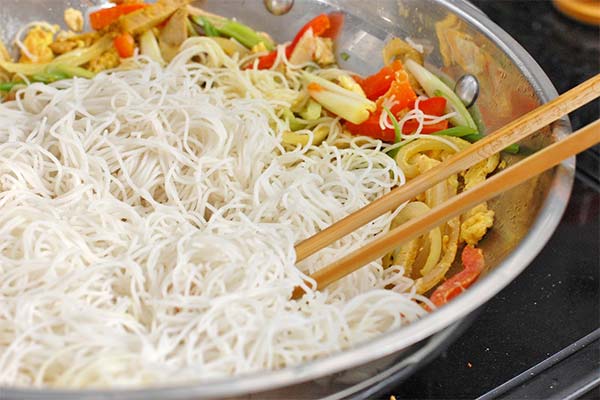
The following varieties of rice noodles are popular in Asian countries:
- Gotiao - classic pasta that does not exceed 3 mm in width, eaten with vegetables, soy sauce and spicy seasonings.
- Mingxian - the thinnest products, slightly salted, which are used in soups and broths.
- Shahefen - tastes like classic pasta, but is wider, allowing it to be used for making second dishes and side dishes.
- Layefen - thick noodles that contain starch, but are translucent in color and have a round shape. It is almost impossible to find such products in Russia. But the domestic consumer is offered the usual, only long and thin pasta made of rice grits.
Interesting facts about rice noodles
- Already in the 17th century, the Japanese were constantly preparing and eating rice pasta. It was a must-have dish for the samurai, who carried dry noodles, a cup for steaming them and chopsticks with them everywhere. Maybe that's what kept Japanese samurai invincible, agile and strong.
- The longest noodles in the world were made by the Chinese in Zhengzhou. Its length is 420 meters. Definitely a world record!
- In China there is a belief about noodles that "the longer they are, the longer the life". Therefore it is customary to treat guests here only with long noodles that are not broken into pieces.
Nowadays noodles are universal and widespread all over the world. Rice, buckwheat, "glass" - it successfully replaces the classic wheat noodles and potatoes, which is a traditional dish for the Russians. Which is not surprising. Cereal pasta is not only nourishing and tasty, but also very useful for the body.
«Important: All information on this site is provided solely for introductory purposes. Before applying any recommendations, please consult with a specialist. specialist. Neither the editors nor the authors are liable for any possible harm caused by materials."

